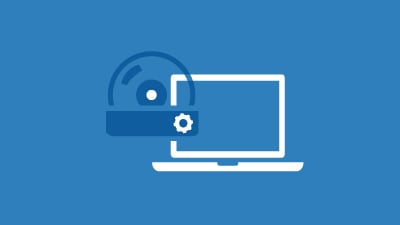Was Everest ERP Software Ready for the New Normal?

2020 was, in a word, unprecedented. Combine pandemic-driven lockdowns, recession, and an election thrown in for good measure all combined to make for an interesting time. And with all the uncertainty that the year brought, change was an imperative. From state governments limiting or restricting capacity in stores to increased safety measures, evolving customer expectations, and challenges in the supply chain, retailers needed to turn on a dime to keep up.
Unchanging Software in a Changing Landscape: Did Everest Leave You Behind?
But for all too many companies, the intense wave of challenges was too much. Many businesses shut down and many more struggled to keep the money flowing. Some were able to scrape by and others were able to transform their businesses.
Built for the Past, Unchanging in the Present
But for Everest users, the unprecedented pace of change may have left them out in the cold. A software that was barely ready for 2010, much less 2020, it was hard enough to get in line with the tax burden from Wayfair—and even harder to adapt to the craziness that was 2020. As we’ve discussed in an earlier blog on Everest ERP, the company once had a lot going for it before falling out more than a decade ago:
Once considered an innovator in the early 2000s, the company reached its peak in 2004 before it began its decline, culminating in a 2007 acquisition by a “revitalization” firm who specializes in gutting companies and doing just enough support to keep clients paying a maintenance contract. […]
The speed of business has increased, and this is no more prevalent than in ecommerce—Everest’s core focus. In a world of two-day shipping, user-friendly websites, and increased visibility, customers have higher expectations than ever. Legacy systems like Everest were designed for the mid-2000s and fail to deliver much needed automation, functionality, and user friendliness that modern systems provide.
Was 2020 the Wake-Up Call? It Certainly Should Have Been
From lack of visibility to the proliferation of manual processes, the software’s inability to change left its customers unable to react to the challenges they were presented. This was made all too clear in the last year.
End users had little access to the software—work-from-home orders left them disconnected. Even when they did have access, they were spending more time dealing with glitches, attempting to catch up, and waiting on the software to be even remotely productive.
Unfortunately, this lack of access had a ripple effect. Poor visibility into finances made it hard to understand buying power. Lack of connection with inventory made supply chain disruption even more painful. Something like a curbside pickup initiative was simply out of the question.
Revisiting Everest: A Look at the Downfall from a Former Reseller
Over the past few years, we’ve been incredibly critical of Everest ERP. After all, as one of their biggest and brightest resellers, we spent a healthy amount of time making the product work like it was intended. But after its buyouts, the company not only abandoned its customers, but also its reseller base, opting instead to milk the remaining user base for support contracts. If you haven’t already, it’s highly recommended you check out our older blogs—written when the software couldn’t keep up with an “easy” time in 2019.
What’s Next for Everest Users?
Prior to the acquisition by Versata in 2009, Everest was faltering, receiving poor reviews, churn, and horror stories from across the web (including this video from Oregon-based Sports Vision Bend). Following the acquisition, the company was gutted, with Versata focusing on serving an existing yet shrinking customer base.
In this article, we look at the challenges this presented—a lack of innovation, its failure to keep up with the times, and the challenges in getting support and integration. Read What’s Next for Everest Users here.
Legacy ERP Makes for Overbearing Challenges
As the speed of business changed, Everest remained the same. Buggy, unstable, and slow. In Descending Everest: User Challenges from Using Legacy ERP, we discussed how your people are impacted by the company’s failures to provide visibility, automation, or connection with the rest of the organization.
Starting Your Descent: First Steps to Moving Away from Everest
Everest reached its peak more than a decade ago, leaving users with less value each and every day. But after you decide that the software no longer delivers, where do you go? How do you look for your next product? In First Steps to Descend Everest ERP, we explore your earliest steps away from the new software, including what to look for and how to get people on board.
Making the Move: Acumatica and Cloud 9 ERP Solutions
As a channel partner who long helped companies like yours to find their way onto the Everest ERP system, we have since evolved to offer a new product: Acumatica. The perfect solution for companies in retail and ecommerce, many former Everest users have made their way away from the software to a much more user-friendly and functional solution like Acumatica.
At Cloud 9 ERP Solutions, some of our most notable (and vocally supportive) customers are Everest transplants, and as a former Everest ERP reseller, we can certainly tell you that we have seen both sides of the argument and feel that Acumatica ERP is the ideal solution to replace it.
Offering better technology, more flexibility, and a vision toward the future, Acumatica provides user-friendly and functional alternative to Everest ERP and we have been the leader among implementation partners helping clients move from Everest to Acumatica. Learn more about this Everest ERP alternative.
Learn more about the true cost of ownership of ERP using this helpful ROI guide and schedule a demo by clicking the button below. Watch the video below to discover the difference between connecting to a legacy ERP like Everest vs. true cloud ERP software.



